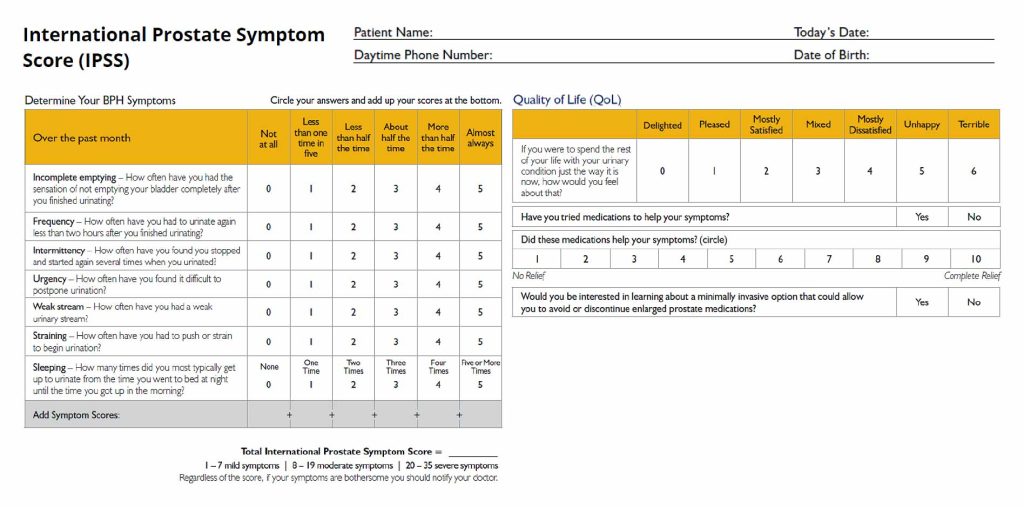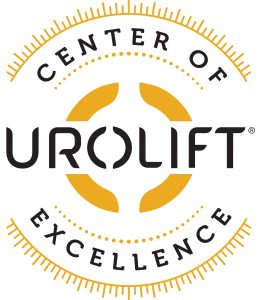Enlarged Prostate/Benign Prostatic Hyperplasia (BPH) Treatment in Staten Island, NY
The prostate is a small gland in men that is essential to the reproductive system. Its most important function is to produce prostatic fluid, which is a major part of semen. The prostate is the source of several common issues found in men, including benign prostatic hyperplasia (BPH), more commonly known as an enlarged prostate. Richmond University Medical Center in Staten Island offers comprehensive care and treatment for BPH symptoms. Discover more about BPH and how it is treated by the dedicated urology team at our Urology Services Center.
What Is Benign Prostatic Hyperplasia?
BPH is a condition present in males when the prostate and the surrounding tissue expand. Throughout a patient’s life, the prostate will continue to grow. It is only when it grows too large and starts contributing to health conditions that it becomes a cause for concern.
Because the prostate grows as a man ages, an enlarged prostate is most commonly found in older men. It affects approximately 42 million men in the US and over 660 million globally. Research shows that about 50% of men between the ages of 51 and 60 have BPH. That number increases to 70% for men aged 60 to 69 and 80% for men over 70.
The chances of developing BPH drastically increase with the following risk factors:
- Men over the age of 50
- A family history of BPH
- Being overweight or obese
- Failing to live a healthy and active lifestyle
BPH Symptoms
An enlarged prostate causes a series of health concerns, which results in numerous symptoms. The condition can irritate or block the bladder, causing frequent feelings of needing to urinate. This sensation can occur as often as every one to two hours, mainly at night.
Other symptoms of BPH:
- Dribbling or weak/intermittent urinary stream
- Feeling of incomplete bladder emptying
- Difficulty or delay in starting urination
- Urgency to urinate
- Elevated PSA levels
- Inability to urinate or kidney pain
- Belly pain
- A weak urine flow
- The need to push or strain to pass urine
Diagnosing BPH at Richmond University Medical Center
To ensure accurate diagnosis, urologists at Richmond University Medical Center performs a variety of tests when identifying and monitoring BPH, such as:
International Prostate Symptom Score
The American Urological Association developed the International Prostate Symptom Score (IPSS) to assess urinary changes or symptoms. This questionnaire can rate BPH from mild to severe. IPSS is often the first step to diagnosing BPH.
Urine Tests
Urine tests show how well the patient releases urine. By measuring urination pressure and flow, urine tests can determine whether or not the urethra is blocked or obstructed.
Imaging
To assess the size and shape of the prostate, physicians will administer scans and perform imaging exams. A cystoscopy is a common test that involves using a scope to inspect the inside of the bladder.

BPH Treatment Options
Richmond University Medical Center offers multiple treatment options for patients with BPH. Treatments are recommended based on a patient’s symptoms, overall health, and treatment goals. After discussing with patients, physicians will craft personalized care plans that can include the following options:
- Medications to manage symptoms or reduce the size of the prostate
- Aquablation therapy, which entails using an ultrasound-guided water pressure jet to remove unhealthy prostate tissue
- Laser vaporization of the prostate to destroy unhealthy tissue
- Prostate artery embolization, which blocks blood supply to the prostate, reducing its size over time and controlling bleeding
- Robotic simple prostatectomy to remove a large part of the prostate
- Transurethral resection of the prostate (TURP) to shave down the prostate

For more information, visit www.urolift.com
The UroLift System
UroLift is another effective BPH treatment option offered at Richmond University Medical Center. The UroLift System is a cutting-edge, minimally invasive treatment method that involves placing clips inside the prostate to pull back tissue and open the urinary channel. The treatment is unique among leading BPH procedures as it does not involve heating, cutting, or destroying prostate tissue.
Many patients elect this treatment option for the following reasons:
- Deemed safer than other treatment options with fewer risks
- Effective results
- Quicker relief from symptoms than most medications
- Preserves sexual function
The urology team at Richmond University Medical Center has earned the prestigious designation of being certified as a UroLift Center of Excellence. This recognition is awarded when physicians have attained a high level of training and experience with the UroLift System, ensuring top-quality care for patients.
Seek Comprehensive BPH Treatment in Staten Island
Patients in Staten Island experiencing symptoms of an enlarged prostate can find relief at Richmond University Medical Center. Care is available at the Urology Services Center, part of the Richmond Health Network. Our team of highly qualified urologists provides patients with a variety of treatment options to deliver the desired results. To learn more about BPH and how it is treated at Richmond University Medical Center, contact us today or make an appointment.
Further Resources
Educational Video: Watch the explanation of the benefits of this minimally invasive procedure in providing relief for men with an enlarged prostate. Watch it below.
Additional Information: For more details about the UroLift System, visit www.urolift.com.



